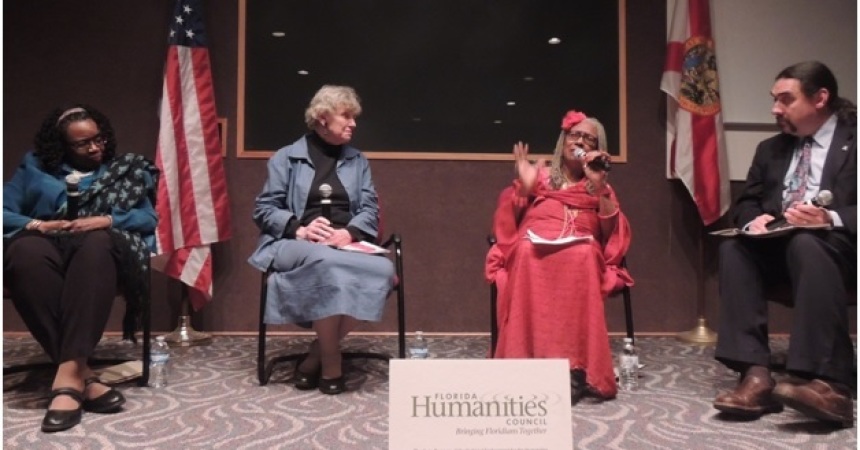
Women Share Their Roles in the Civil Rights Movement
By Christal Searcy
Outlook Writer
The stage was set for a historical night at the Museum of Florida History in Tallahassee on Feb. 27 with a panel of three women discussing their part in the Civil Rights Movement.
In honor of Black History Month and in preparation for Women’s History Month in March, Priscilla Stephens Kruize, Gwendolyn Zohara Simmons and Sandra Parks recalled their perspectives on stories of the past.
Simmons of the University of Florida was active in the Freedom Summer in Mississippi and was a member of the well-known Student Nonviolent Coordinating Committee (SNCC). She remembered being the first person in her immediate family to go to college. But her grandmother issued her a warning before she left.
“My grandmothers said to me ‘do not get involved in all this trouble going on here,’” Simmons said. “I said ‘oh no grandma I’m not planning on getting involved.’”
The year was 1962. Simmons was in Atlanta and she remembered that the Rev. Dr. Martin Luther King, Jr. had come to Atlanta. The SNCC headquarters was just two and a half blocks away from Spelman and Morehouse colleges’ campuses. During her freshmen orientation at college her grandmothers’ warning was reiterated by school officials.
“We were told every day of those five days, (that) we didn’t come to get involved in the Civil Rights Movement,” Simmons said. “I really had no intention to get involved.”
But all that changed, Simmons said.“The more involved I got, the more determined I got. Of course, that led to me being on probation,” Simmons said.
Parks was active in the statewide movement in Florida and a former city commissioner of St. Augustine.
“My grandfather was the head of the blind department at the Florida school for the Deaf and Blind until he realized the only thing he had in common with those blind folks was that he was blind,” Parks said. “It was my grandfather that gave me one of my first and most perplexing lessons about race.”
Parks recalled when she was 10-years-old and the students from the deaf and blind school were segregated. One day, she said, she was sitting in the lobby of my grandfather’s hotel when a stream of students came by.
She asked her grandfather, “Poppa why is it that the White blind kids and the Negro blind kids can’t walk together? They can’t see.”
She said her grandfather replied, “’It’s not who they see. It’s who sees them that make this necessary.’”
“That was the first time in my life that I ever remember anybody trying to teach me explicitly about this very confusing situation called race,” Parks said.
Kruize was a leader in the Tallahassee movement and a founding member of Tallahassee Congress of Racial Equality (CORE). She and sister Patricia Stephens Due spent 49 days in jail for protesting lunch-counter segregation.
“Before my sister and I came to Tallahassee, we were very blessed to have been at a workshop in Miami, Fla., in 1959 where we learned about CORE, the Congress of Racial Equality and their strategies: nonviolence, interracial, testing first then demonstrating later,” Kruize said.
Kruize and her sister were so excited, she said. They thought it would be a piece of cake to practice their newfound knowledge in Tallahassee.
“Trust me it was not a piece of cake,” Kruize said. “Nobody wanted to associate with us but we didn’t give up and we manage to do a very small sit in.”
Their actions earned them attention from the president of then Florida A&M College and the student body.
“So they all tried to stop us but we didn’t stop. We kept going and going,”Kruize said.








